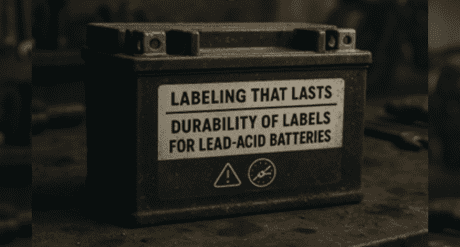
EU REACH: Hexavalent Chromium (CrVI) Changes to Regulatory Approach

This blog was originally posted on 18th October, 2023. Further regulatory developments may have occurred after publication. To keep up-to-date with the latest compliance news, sign up to our newsletter.
AUTHORED BY Catherine Phillips, Principal Regulatory Consultant, RINA
The Registration, Evaluation, Authorisation and Restriction of Chemicals Regulation (REACH) seeks to phase out the use of hazardous substances through mechanisms such as authorisation, or restriction. Currently many Hexavalent Chromium substances are subject to authorisation, however the Commission considers that this is no longer appropriate to control the risk to human health posed by these substances. Therefore, the EU has recently announced that the plan is to manage the risks through restrictions instead.
The restriction aims to improve the effectiveness and efficiency in regulating Cr(VI) substances in the EU and will cover
chromium trioxide and chromic acid. Other hexavalent chromium compounds may also be added where it has been determined that there is a chance of regrettable substitution. The proposal for the restriction will be outlined in the Annex XV dossier due to be published mid-October 2024 and adopted around September 2026 / early 2027. The restriction can include derogations which allows for differentiated transitional periods for different uses depending on information submitted during the consultation process, e.g., the risk, socio-economic considerations, and availability of alternatives. However, those derogations may not necessarily reflect granted authorisations in terms of timing and/or scope. It is also important to note that, unlike the authorisation process, the evidence to substantiate the need for latter compliance dates for certain products needs to be produced before the restriction is finalised.
Change In Approach
The reasons for the change of approach, explained in the Q&As from the European Commission for Growth (EU DG
Grow), are:
- Considering that authorisation decisions often impose additional risk management measures for the authorisation holders, and that in some cases a lack of suitable alternatives are not demonstrated, the delay in deciding on authorisations undermines one of the objectives of the REACH Regulation, i.e., the protection of human health and the environment.
- The delay in deciding authorisations arises because of a substantial number of applications for authorisations, arising from businesses trying to manage their business risk, as a consequence of the prosecution in the European Court of Justice and subsequent annulment of authorisations for chromium trioxide.
This could explain the change in preference from authorisation to restriction for broad substance uses, because of the challenge in processing the number of authorisations that would be generated. This has been a factor in choosing restriction for per and polyfluorinated substances (PFAS) rather than authorisation.
What Have Been The Issues With Hexavalent Chromium Authorisation?
The Q&As clarify the European Commission’s position regarding existing hexavalent chrome, and explain that, for authorisations:
- The use applied for needs to be sufficiently narrow to allow meaningful analysis of alternatives and makes sure that uncertainties on availability of suitable alternatives are negligible.
- Applicants need to properly justify the need for both the specific functionality (or functionalities) provided by the substance of very high concern and, for each functionality, the specific level of performance. The Commission will thoroughly verify that this burden of proof is discharged.
- Companies are only covered by an authorisation if they can show that the risk to human health and the environment is minimised. However, business practices for hexavalent chromium are inconsistent, and additional requirements are placed on applicants and downstream users as part of the authorisation. This included the requirement to submit occupational hygiene data via the authorisation holder, or at least demonstrate risk control equivalent to those companies that have submitted data.
The European Court of Justice (ECJ) in Case C-144/21, partially annulled Commission Decision1 C(2020)8797 (so-called ‘Chemservice decision’), because none of the above criteria were met and especially for point 3 above, evidence of adequate risk control was lacking. This impacted the following uses:
- Functional chrome plating
- Surface treatment for applications in the aeronautics and aerospace industries (unrelated to functional chrome plating or functional chrome plating with decorative character);
- Surface treatment for applications in various industry sectors, namely architectural, automotive, metal manufacturing and finishing, and general engineering (unrelated to functional chrome plating or functional chrome plating with decorative character); and
- Formulation of mixtures where associated with these uses.
Fundamentally, the court didn’t believe that these authorisations were doing the job of controlling the exposure to individuals. In anticipation of this judgement, and subsequently, many downstream users have applied for their own authorisations, which is overloading ECHA, and is not sustainable.
What Happens With The Annulled Authorisation?
Downstream users currently covered by the annulled decision can still use chromium trioxide until:
- At least 20th April 2024, if the Commission has taken a new decision on the original authorisation application before this date, or
- Until the Commission has taken the decision (if this occurs after 20th April 2023).
For the use to be legal, downstream users must still adhere to the use descriptions and operating conditions set out in the original authorisation application.
Engaging With The Restriction Process
After the Annex XV dossier has been published mid-October 2024, and the completeness check on it has been carried out, there will be an opportunity for all interested parties to provide comments into the process. RINA advises responding to the consultation if your business uses an authorisation, or your supply chain relies on chromium trioxide or chromic acid and will be impacted by the restriction process. If information is gathered now on viability of alternatives for your particular uses and your timeline to substitute, it can be provided to the consultation to inform potential derogations and ensure reasonable phase-out timescales are at least considered.
Stay On Top Of Your Changing Regulatory Obligations
Tell us your compliance challenges and we will find the solution that’s right for you.
Author


Catherine Phillips, Principal Regulatory Consultant, RINA
Catherine has a wide range of experience across the defence, aerospace, nuclear, energy and rail sectors in regulatory compliance management. Her areas of specialist knowledge are in chemicals management including in management of information for REACH, ROHS, Biocides legislation across the globe, but also has wide ranging knowledge throughout occupational health and safety, product safety and environmental legislation as well as in the area of hazardous materials management.
She has helped companies adapt to the requirements of changing legislation for over 15 years, most recently in defence maritime legislation compliance.
She can be contacted at – cathy.phillips@rina.org








